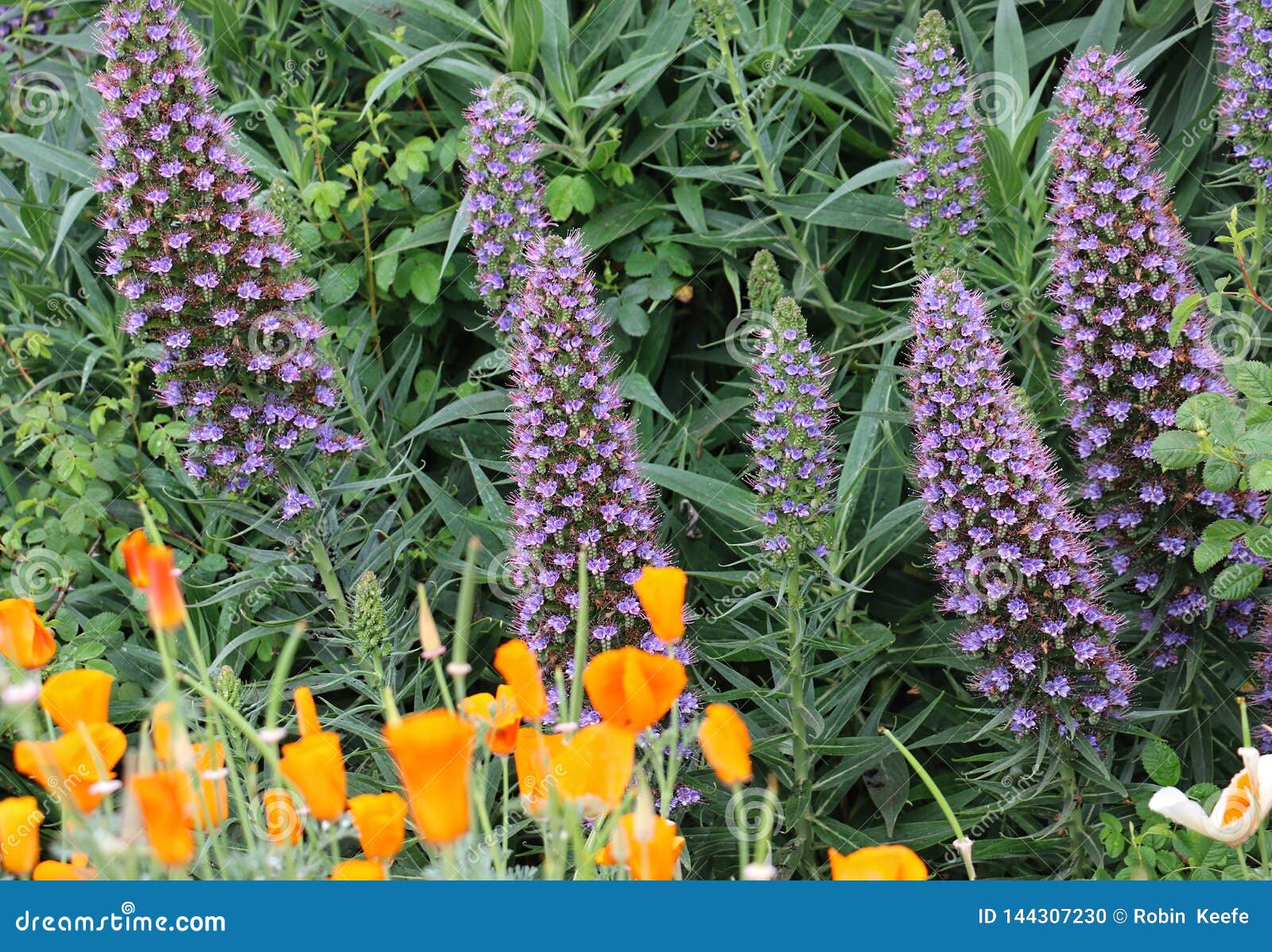One plant might live for years without flowering, but near the end of its life, it might use all of its energy to make flowers on a big stem and then die.
Many flowers that grow in tall vertical stalks can provide thrilling height, drama, and interest to garden beds, borders, and containers. Their spire-like shape draws the eye upwards and makes an attractive companion or backdrop to shorter blooms.
If you want to add architectural dimension or vertical accents to your landscape consider incorporating these beautifully statuesque flowers that bloom on stalks
Delphinium
Delphinium produce dense columns of vibrant blooms in blue, purple, pink, white, and red Their flower stalks tower 2-8 feet tall depending on variety Popular types include Pacific Giant hybrids and Belladonna Group. Give delphinium rich moist soil and partial sun. Cut back stalks after initial flowering to encourage reblooming.
Foxglove
The flower spikes of foxglove rise 2-5 feet above attractive basal leaves. Pendulous tubular blooms occur in shades of purple pink, yellow red, and white with speckled throats. Foxglove prefer partially shaded sites withaverage fertility and moisture. They reseed freely. Biennials and short-lived perennials in zones 4-8.
Lupine
Lupine bloom in dense, thick vertical spikes measuring 1-4 feet tall depending on variety. Flower colors include blue, purple, red, pink, yellow, and white. For maximum flowering, grow lupine in full sun and fertile, well-draining soil. Cut back spent flower stalks to encourage reblooming. Annuals and perennials in zones 4-8.
Hollyhock
Historic cottage garden favorite hollyhock sends up stunning flower stalks 5-9 feet tall! Single and double blooms open in a rainbow of colors on sturdy spikes. Give hollyhock full sun to light shade and well-drained soil. Stake tall stalks if needed. Often grown as biennials but perennial in zones 3-9.
Gladiolus
The sword-like leaves of gladiolus give rise to flower spikes 2-4 feet tall lined with gorgeous blooms. Available in a spectacular range of colors, gladiolus flower in summer into fall. Plant the corms in full sun and well-drained soil. Dig and store the corms in winter. Hardy in zones 7-10.
Verbascum
Verbascum, also called mullein, is prized for its tall candle-like flower spikes in yellow, white, pink, purple, and orange. Plants reach 2-6 feet tall depending on variety. Verbascum thrives in average to dry soils and full sun. Cut back spent flowering stalks after blooming. Perennial in zones 5-8.
Garden Phlox
Garden phlox sends up panicles of sweetly fragrant flowers in summer supported by sturdy straight stalks 2-4 feet tall. Popular varieties offer blooms in white, pink, red, purple, coral, and bicolors. Give phlox full sun and evenly moist soil. Deadhead to prolong bloom. Perennial for zones 4-8.
Celosia
The long wheat-like flower spikes of celosia add incredible texture as they tower 1-5 feet tall depending on variety. Blooms occur in brilliant warm shades. Celosia love heat, humidity, and full sun. Pinch back young plants to encourage branching. Grown as annuals in most zones but perennial in zone 10.
Oriental Lily
Elegant oriental lilies produce an abundance of large, showy, often fragrant blooms on straight stalks 2-5 feet tall. They bloom in summer into fall in white, pink, red, yellow, and orange. Site oriental lilies in full sun to partial shade and well-drained evenly moist soil. Mulch for winter protection in colder climates. Grow as perennials in zones 4-9.
Delphinium
The tall, dense flower spikes of delphinium add incredible drama and vertical accents. Towering on stiff straight stalks, their blooms occur in blue, purple, pink, red, white, and bicolors rising 2-8 feet tall depending on the variety. Site delphinium in full sun to light shade in fertile, moist well-draining soil. Shear back spent flower stalks to encourage reblooming. Perennial in zones 3-7.
Torch Lily
The fiery orange or red flowers of torch lily emerge on sturdy stalks 2-5 feet tall in late summer. Also known as red hot poker or kniphofia, these hardy perennials thrive in full sun and prefer moist well-draining soil but tolerate drought once established. Remove spent blooms to encourage reblooming. Adaptable in zones 5-9.
Giant Allium
The large round flowerheads of giant allium hover 1-4 feet above slender leaves like colorful ornaments on straight bare stalks. Blooms in various shades of purple, pink, white, and yellow. Plant bulbs of giant allium in fall in sunny sites with well-drained soil. Foliage dies back after flowering. Perennial in zones 4-8.
Bellflower
Many bellflower species produce abundant bell or cup-shaped violet-blue flowers on long slender stalks reaching 3-6 feet tall. Excellent varieties includeCLUSTERED BELLFLOWER and CARPATIAN BELLFLOWER. Give them full sun to light shade and average moist well-draining soil. Deadhead to prolong bloom. Perennial in zones 3-8.
Hydrangea
While known for their large mophead flowerheads, many hydrangea paniculata and arborescens varieties bear conical or pyramid-shaped flower clusters on upright woody stalks up to 6 feet tall. Blooms in white, pink, or blue. Prune in late winter. Prefers morning sun, afternoon shade, and moist fertile soil. Perennial shrub for zones 3-9.
Delphinium
The tall, dense flower spikes of delphinium add incredible drama and vertical accents. Towering on stiff straight stalks, their blooms occur in blue, purple, pink, red, white, and bicolors rising 2-8 feet tall depending on the variety. Site delphinium in full sun to light shade in fertile, moist well-draining soil. Shear back spent flower stalks to encourage reblooming. Perennial in zones 3-7.
The strong vertical form of these flowers provides phenomenal vertical interest paired with lower growing plants. Their towering flower stalks act as focal points and add height and structure to flower beds, borders, cutting gardens, and large containers.
Different Types of Flowering Agave Stalks
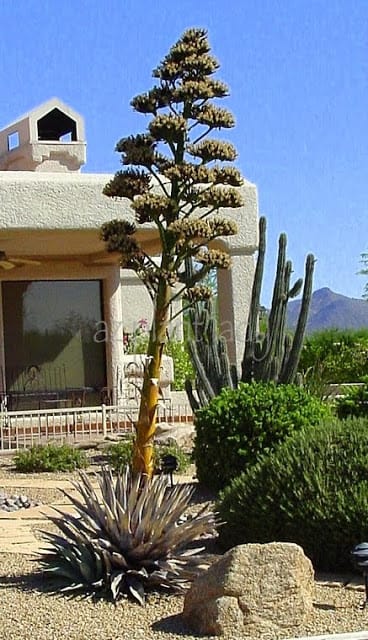
I am not completely sure what species this particular agave was. Note the ‘pup’ growing from the side of the agave.
There are two different styles of the flowering stalk (inflourescence). The paniculate, above, and the spiculate, below. You can clearly see the difference in the shape and design of the stalks.
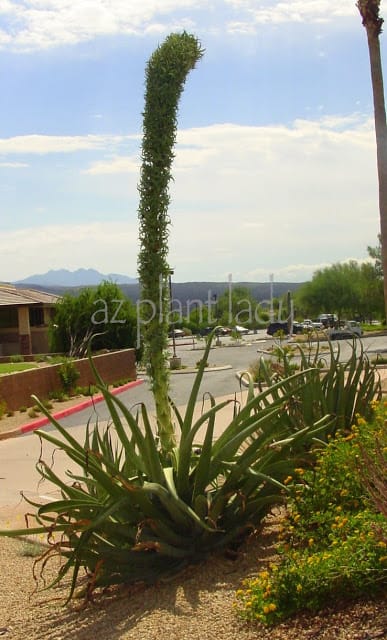
Octopus Agave (Agave vilmoriniana) I planted this agave (as a 5-gallon) in 1999 and it flowered in 2005.
Agave Reproduce in Several Ways
Agave reproduce both by flowering (seeds) and vegetatively (bulbils & offsets).
A previous post called Pups In The Garden…Not The Soft Cuddly Kind talks more about how agave plants make offsets (pups) and how to plant them.
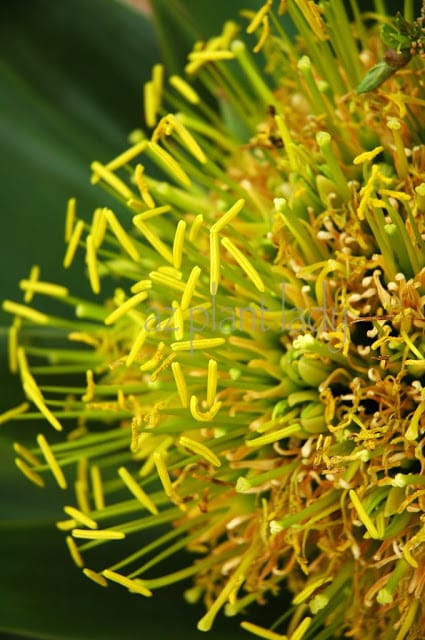
Agave desmettiana, or Smooth Leaf Agave, flower. This agave is from my garden; it was planted in 1998 and bloomed in 2007.
You can see the small bulbils (baby agave) forming among the flowers above. The bulbils will continue to grow and will receive nourishment from the stalk. If left alone, the bulbils will eventually fall to the ground and root under ideal conditions. You can take them off the flower stalk and plant them, but it’s best to wait until they have at least four leaves.
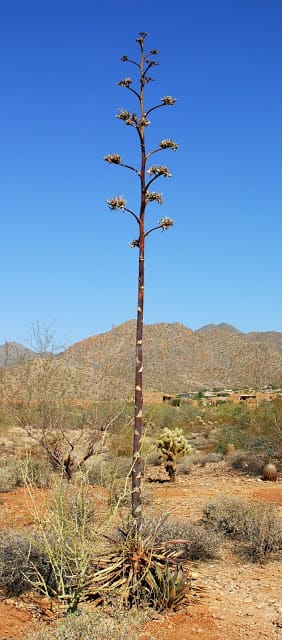
An agave in the desert that has died after flowering.
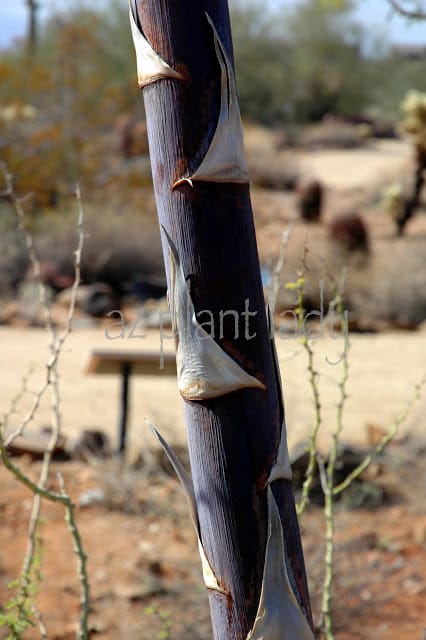
Close-up of the, now dead, stalk (inflourescence)
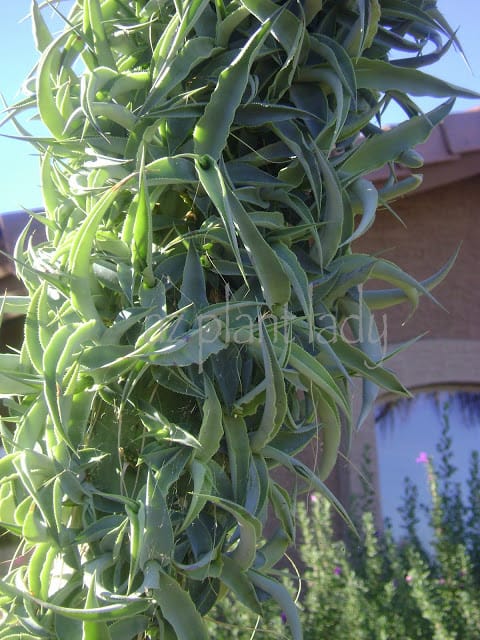
There are bulbils on the flower stalk of an Octopus Agave (Agave vilmorniana). You can pick them off and plant them in soil that drains well.
As a student of horticulture, I fell in love with Octopus Agave early on. I bought my first one at a plant sale. I planted it in a large pot and it thrived. Years later, the flowering stalk started to grow. I was both excited and a little sad. I was happy because it was finally achieving it’s crowning glory…. and sad because I knew it would eventually die at the end after finishing it’s life’s work.
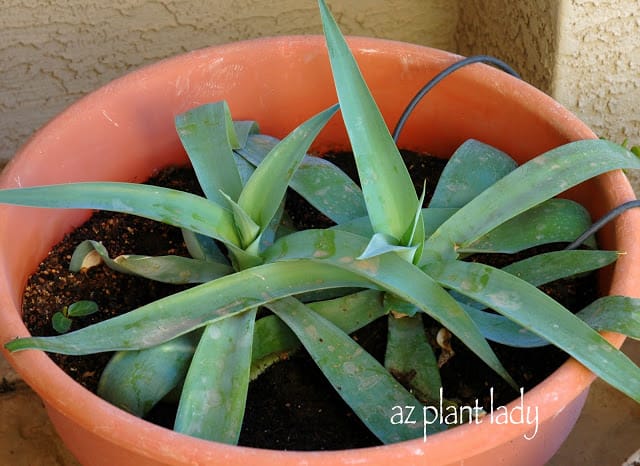
However, that is not the end of the story…. my original Agave lives on. It has two bulbils that I planted from its stalk (above). They are now ready to be planted in my garden. (Actually, I could have planted them much sooner).
**Note the little seedling coming up on the left side of the pot. My son planted the seed, but we aren’t sure what it is. I think he might have planted an apple seed. We shall see….

Collard Flower Stalks: Bonus Harvest
Are tall stalk flowers a good backdrop for small plants?
Tall stalk flowers make excellent backdrops for smaller plants. When placed in the back of your garden beds, they can create a sense of depth and layering, as well as provide a visually interesting contrast in height. This technique can bring out the beauty of both the tall flowers and their shorter neighboring plants.
What flowers look good in a Wold garden?
As the Latin name suggests, the inflorescences are “pyramidal” or rather cone shaped and very long. Chimney bellflower is another tall perennial that looks great in wold and natural looking gardens, like cottage and English country gardens. It is ideal for mid to back of large borders, or for very large flower beds.
What flowers grow in a cluster?
Also called lavender mist, this flower has lavender-purple blossoms that offer a spectacular garden backdrop when grown in a cluster. Meadow rue stands between 4-6’ and should be shown within zones 4-7. This showy flower has hooded, purplish-blue flowers that grow 2-4’ tall.
What flowers grow well en masse?
With a relatively short growth habit, pincushion flower works well planted en masse as an edging plant, in the front of beds and borders, and in containers or windowboxes. Burpee has a good selection available in shades of blue, lavender, pink, orange, and white. 16. Red Valerian ( Centranthus ruber)
- The Ultimate Guide to Growing Strawberries in Raised Beds - August 8, 2025
- No-Dig Garden Beds: The Easiest Way to Grow a Beautiful Garden - August 6, 2025
- How to Protect and Preserve Wood for Raised Garden Beds - August 6, 2025

